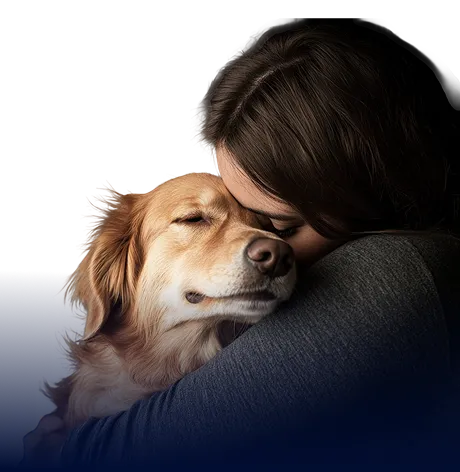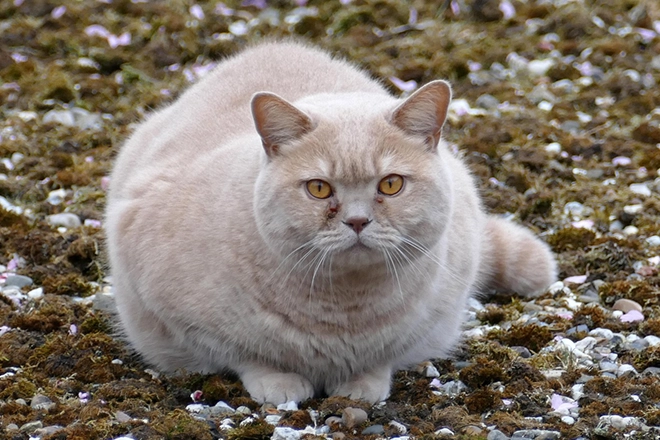For the Purrbabies


Worried your feline friend may be overweight? Read on for the causes of cat obesity and what you can do to help them lose excess pounds.

While an obese cat may make for a funny occasional meme, it’s no laughing matter when it comes to their health. Severe weight gain can lead to conditions like diabetes and cancer, but even a few extra pounds might mean a diminished quality of life for your whiskered friend. Read on to learn how much is too much, and why your cat may have gotten fat in the first place,.
According to the Association for Pet Obesity (APOP), over 60% of cats are overweight, and less than half of their owners recognize it. Your veterinarian can help you determine the ideal body weight to target for your cat given their age, breed, and other health factors. Many vets use a body condition scoring system between 1 and 5 (with 3 being “normal”). These weight assessments are part of your cat’s regular checkups, but it’s possible to conduct a quick check at home using the chart and steps below.
When studying your cat’s waistline from a top view, does their body have a slight taper towards the hips? If they do, they are probably a healthy weight. On the other hand, a waist that’s too narrow in considered underweight while a waist that’s rounded and hard to make out indicates obesity
Feeling for your cat’s ribs is a key indicator to determine whether your cat is fat. It’s a good sign if the ribs can be felt without excess fat.
If your cat’s ribs cannot be felt under a layer of fat, your cat is overweight. You’re looking for a tucked abdomen, and you don’t want to be able to grab a handful of fat.
👉 Want more help determining whether your cat is overweight? The FDA will help walk you through its body conditioning chart in the video below:
Cats are creatures of habit that thrive on routine, so they must be motivated to exercise on a consistent basis. Your cat may be gaining weight if their schedule lacks playtime and you’re overfeeding them. One study on overweight companion animals found that active playing for 10 minutes daily was as effective as calorie restriction in reducing cat obesity. Here are some common reasons your cat may be gaining weight:
Diabetes is the most common disease in overweight cats, but other conditions are linked to feline weight gain as well. Fortunately, many of these diseases are treatable if found early.
Here are the most common risks associated with obesity in cats:
Your cat will still love you if you bring them to the vet regularly for wellness appointments (aka weigh-ins!) and give them less treats! Consider the following tips for helping your favorite furball shed excess weight:.
We all want our feline friends to be healthy, and maintaining an appropriate weight per your vet’s recommendation is the best way to guarantee you’re on the right track to a long, comfortable life. And the plus side is your cat will be overall happier, even if they whine from time to time to try and get an extra snack out of you.
Your vet can help you determine your cat’s ideal body weight. Most vets use a body condition scoring system of either 1-5 (3 is normal). Pet owners can use this, too, and your vet can show you the steps.
Your cat may be gaining weight with too many meals and not enough playtime. However, you’ll always want to rule out health issues with your vet.
Some ways to help your cat lose weight include giving them small, frequent meals throughout the day, using slow-feeding bowls and puzzles, and increasing playtime. Be sure to consult your vet on a eal plan that’s best for your kitty.
No, a cat should not be overweight given their small stature. Pet owners often show their love through treats and junk food for their pets. Unfortunately, this habit contributes to obese cats, leading to health problems.








